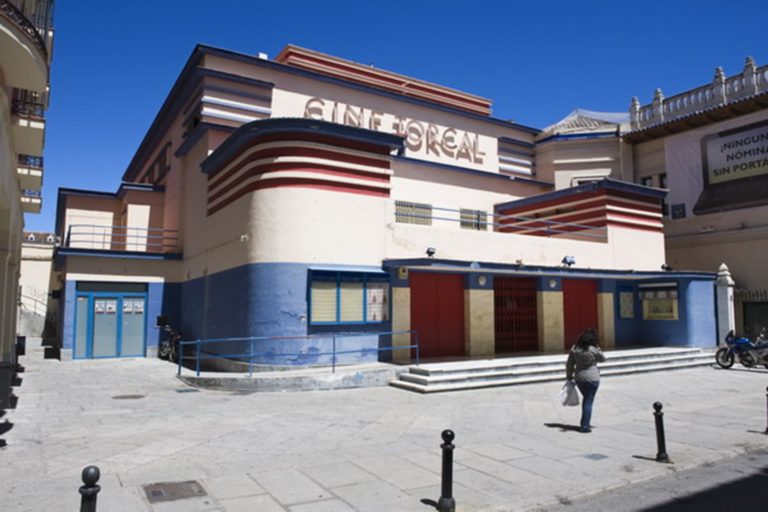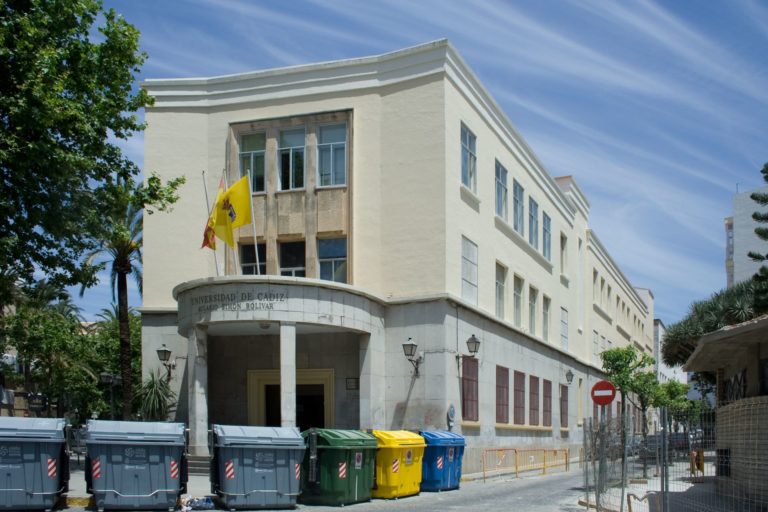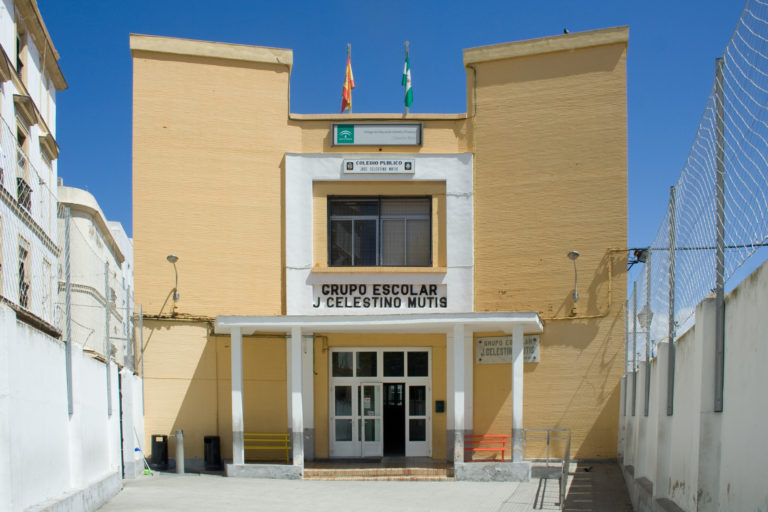Antonio Sánchez Esteve
Jerez de la Frontera, 1897-Cádiz, 1977
Antonio Sánchez Esteve was born in Jerez de la Frontera, in the province of Cádiz, in 1897. The son of a lawyer, but the nephew and cousin of architects, he completed his coursework in architecture in 1921 at the Madrid School and received his degree two years later. Although he began with a number of private commissions in his home town of Jerez, he moved to Cádiz in 1924, where he earned the post of municipal architect through a public examination, competing against notable architects such as José Joaquín González Edo. From that point forward, he concentrated a large part of his efforts on his work as municipal architect, on projects that he usually completed together with colleagues – mainly with Rafael Hidalgo and Alcalá del Olmo, and with Manuel Fernández-Pujol Fernández – but he continued developing projects in his private studio, where he usually worked alone.
Although he is one of the first architects to introduce rationalism in Andalusia with a solid, extensive body of work, he has only recently received recognition, possibly because he did not belong to the most influential circles and due to the fact that his projects were not published in journals of the time. This also meant that many of his buildings were demolished, including some of major interest, which only remain documented in blueprints and photographs. Although due to his age, and where and when he went to architecture school, he belonged to what is called the “generation of ’25”, Sánchez Esteve’s legacy, fundamentally in the province of Cádiz – and, in part, in the province of Málaga – displays an energetic and fresh rationalism, emphatic in its forms, without exuberant ornamentation but incredibly eloquent in its volumetric conception and the composition of the façades.
After his earliest designs, which show a certain historicist tendency, he built his first noteworthy buildings: the Gades cinema (1933) in Cádiz, no longer standing, and the Torcal theatre-cinema in Antequera (1933-1934), his first well-known work that has been conserved and the first project he built in Málaga. After those two buildings, he specialized in theatre and cinema architecture, an area in which he played a prominent role. From that point forward, similar commissions began coming in, some of them very large, such as the Málaga-Cinema (1934-1935), demolished in 1975. Another of his major works in this typology is the cinema and municipal offices on Plaza del Palillero in Cádiz (1936), which, in addition to resolving a complicated floor plan, generated a very successful urban setting. More discreet, but equally interesting, is the Imperial Cinema in La Línea de la Concepción (1938-1939).
Around the same time, Sánchez Esteve developed several designs for school buildings; those still standing include the Celestino Mutis school (1936-1940) and the Santa Teresa public school (1940), both in Cádiz. Another example that falls outside these typologies, but also with a major urban presence, is the Transmediterránea building, facing the port of Cádiz (1940), which is notable for its formal modernity, very controversial at the time, and for its use of exposed concrete. On another scale, but also from the period between 1937 and 1941, he produced numerous rationalist designs for residential architecture, mainly single-family homes, in the expansion of Cadiz between Puerta de Tierra and Cortadura. Unfortunately, very few have been preserved.
While the period of the Spanish Civil War did not result in a decline in his architectural production or its quality, his post-war architecture began to show a certain formal boldness. We see this in the “W”-shaped floor plan of the Los Olivillos building (1942-1943), the former Provincial Health Headquarters, recently rehabilitated and also recognized for its use of concrete, which sits on the perimeter of the historic city of Cádiz. Although, during this period, his designs often leaned towards a more classical architecture, at time restrained in formal terms and other times relying on a clearly locally inspired ornamentation, his rationalist production continued in the design of cinemas in the province of Cádiz, most of which are no longer standing. It is also worth highlighting his work in the consolidation of the current urban fabric of Cádiz, particularly the configuration of the sector outside the city walls following its reorganization, consolidating the existing structures and opening vehicle routes from the Puerta de Tierra (1949). A restrained rationalism can be found in works such as the School of Commerce (1952), now a classroom building for the University of Cádiz, and the Beato José Hall of Residence at the same University, as well as in the school architecture of the San Felipe Neri schools (1940 -1950), the Salesian boys’ school (1962-1964) and the Salesian girls’ school (1962-1966), all located in the new urban area for which he participated in the planning together with Manuel Muñoz Monasterio.
Antonio Sánchez Esteve died in Cádiz in 1977, a decade after he retired, in 1967, following the completion of his last building, the schools in El Algar (Cádiz). He had kept busy with his hobbies until then, having gradually left behind the field of architecture. His son Antonio Sánchez Martínez-Conde, an architect who earned his degree in 1962, took over the studio. He died in 2019 after having played a very active role in architecture in Cádiz, where he served as dean of the Architects’ Association from 1971 to 1973.
Biography by Blanca del Espino Hidalgo
Bibliography
- AROCA VICENTI, Fernando, Nuevas aportaciones a la obra de los arquitectos Luis Gutiérrez Soto y Antonio Sánchez Esteve, en Laboratorio de arte 13, 2000, pp. 433-442.
- PÉREZ CANO, María Teresa, MOSQUERA ADELL, Eduardo, Antonio Sánchez Esteve Arquitecto en Cádiz 1897-1977, Colegio Oficial de Arquitectos de Andalucía Occidental, Cádiz, 1991.
- MOSQUERA ADELL, Eduardo, PÉREZ CANO, María Teresa, La Vanguardia Imposible. Quince visiones de arquitectura contemporánea andaluza, Junta de Andalucía, Consejería de Obras Públicas y Transportes, Sevilla, 1990.
Related websites
Guía digital del patrimonio cultural de Andalucía, Instituto Andaluz Del Patrimonio Histórico.








